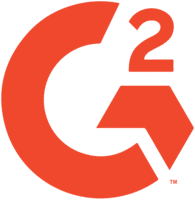Hiring can be difficult without properly knowing the recruitment metrics. Even 75% of employers have hired the wrong person for that reason (CareerBuilder). But don’t worry! If you know all the recruitment metrics before hiring, you can easily avoid bad hires.
In this blog, we will look at what recruitment metrics are. And the most critical 25 recruitment metrics for this hiring season.
Time-to-fill
Time-to-fill is the time it takes from advertising a job to accepting an offer. It’s crucial because it reflects your recruitment efficiency. A shorter time to fill means you’re quickly finding the right talent, keeping your team productive, and reducing the stress of unfilled positions. To improve this metric, streamline your hiring process, enhance job descriptions, and use effective sourcing strategies. Remember, it’s not just about speed; finding the right fit matters too. Balancing quick hiring with quality candidates is key for a thriving team.
Time-to-hire
Time-to-hire measures the period from when a candidate applies to when they’re hired. Unlike time-to-fill, it focuses on the candidate’s journey. This metric is important because it shows how efficient and candidate-friendly your hiring process is. A long time-to-hire can frustrate applicants and might cause you to lose top talent to competitors. To reduce it, ensure clear communication, quick decision-making, and a streamlined interview process. Remember, a positive candidate experience can turn applicants into advocates for your company, even if they don’t get the job.
Cost-per-hire
Cost-per-hire is all about the money spent to bring a new employee on board. It includes advertising, recruiter fees, and interview expenses. Keeping this cost reasonable is crucial for maintaining a healthy hiring budget. To do so, analyze which recruitment channels give you the best value. Also, consider using employee referrals, as they often lead to lower costs and better quality hires. Efficient use of resources, like digital tools for screening, can also cut costs. Remember, smart spending in recruitment is an investment in your team’s future.
Quality of hire
Quality of hire is about how well new employees perform and fit into your team. It’s a key metric because it affects your company’s productivity and culture. To assess this, look at the new hire’s performance, their impact on team dynamics, and how quickly they adapt. Improving quality of hire starts with clear job descriptions and a thorough interview process. It’s also about aligning candidate values with your company culture. Remember, a great hire not only does the job well but also enhances the work environment for everyone.
Applicant drop-off rate
Applicant drop-off rate tells you where potential hires are losing interest in your process. It’s important because a high drop-off rate can mean you’re missing out on great candidates. To keep applicants engaged, make your application process as straightforward as possible. Long forms or unclear instructions can be big turn-offs. Also, keep in touch with candidates throughout the process. Regular updates show you value their time and interest. Remember, a smooth and respectful application experience can turn applicants into future employees or even brand ambassadors.
Offer acceptance rate
The offer acceptance rate is a measure of how many job offers are accepted by candidates. It’s a vital sign of how attractive your company and job offers are. A low rate might mean your offers aren’t competitive enough, either in terms of salary, benefits, or company culture. To improve this rate, understand what candidates value and tailor your offers accordingly. Also, ensure your recruitment process leaves a positive impression, as this can influence a candidate’s decision. Remember, every job offer is an opportunity to show candidates why they should be excited to join your team.
Candidate satisfaction as recruitment metric
Candidate satisfaction is about how applicants feel regarding your hiring process. It’s crucial because a positive experience can turn candidates into advocates for your company, regardless of the outcome. To boost satisfaction, ensure clear communication, respect their time, and provide constructive feedback. An efficient, transparent, and respectful hiring process not only improves your brand reputation but also attracts top talent. Remember, treating candidates well reflects your company’s values and can significantly impact your employer brand.
Source of hire
Source of hire tells you which recruitment channels are most effective. It’s important because it helps you allocate resources more efficiently, saving time and money. Track where your best hires come from – job boards, employee referrals, social media, etc. Then, invest more in these channels. But remember, diversity in sourcing is key; don’t put all your eggs in one basket. By understanding and optimizing your source of hire, you can attract top talent more effectively. Plus, it keeps your recruitment strategy agile and responsive to market changes.
First-year attrition rate
The first-year attrition rate measures how many new hires leave within their first year. It’s crucial to understand the long-term effectiveness of your hiring process. A high rate could signal job fit, onboarding, or workplace culture issues. To reduce this rate, focus on clear and realistic job previews during interviews, effective onboarding, and regular check-ins with new employees. Remember, retaining talent starts right from the hiring stage – ensuring a good match is key to long-term employee satisfaction and success.
Diversity hiring rate
Diversity hiring rate reflects how well your recruitment strategies attract and hire a diverse workforce. It’s more than just a number; it’s about bringing different perspectives and backgrounds into your team. To improve this rate, ensure your job ads are inclusive, use diverse hiring panels, and reach out to a broad range of communities. Remember, diversity isn’t just about meeting quotas. It’s about creating a rich, vibrant workplace where different ideas and experiences thrive, driving innovation and growth.
Recruitment funnel effectiveness
Recruitment funnel effectiveness is about how well each stage of your hiring process works in converting candidates. It’s essential to identify bottlenecks where potential hires drop out or get stuck. To optimize,
regularly review and streamline each stage – from job posting to interviews to offer. Use data to understand where improvements are needed. And don’t forget, a candidate-friendly process is key; a smooth, engaging journey encourages more applicants to stay the course. Effective funnel management leads to better hires and a more efficient recruitment process.
Interview-to-offer ratio
The interview-to-offer ratio shows how many interviews it takes to make a job offer. It’s a critical metric for assessing the efficiency and selectiveness of your hiring process. A high ratio might mean your criteria are too strict or the job description isn’t clear. Conversely, a low ratio could indicate a less thorough vetting process. To find the right balance, refine your screening methods and ensure your interview questions are well-targeted. Remember, the goal is to find the best fit efficiently, without compromising on the quality of your hires.
Employee referral rate
Employee referral rate indicates how many hires come from your team’s recommendations. It’s a valuable metric because referrals often lead to faster, more cost-effective hires who fit well in your company culture. To boost this rate, create an engaging referral program with clear incentives. Encourage your team to participate by making the process simple and rewarding. Remember, your employees are great brand ambassadors; their networks can bring in high-quality candidates who might not be reached through traditional channels.
Application completion rate
Application completion rate measures how many candidates finish the application process. A low rate can indicate a complicated or lengthy application, deterring potential top talent. To improve this, streamline your application form, making it user-friendly and concise. Ensure the process is clear, with straightforward instructions and minimal steps. Remember, the easier it is to apply, the more likely candidates will complete the process. A smooth application experience is the first step in attracting the best candidates for your team.
Hiring manager satisfaction
Hiring manager satisfaction is about how pleased managers are with the recruitment process and the candidates they receive. It’s important because satisfied managers often mean better hires and a smoother integration into the team. To improve this, ensure clear communication between HR and hiring managers, understand their specific needs, and provide them with well-vetted candidates. Regular feedback sessions can help refine the process. Remember, a collaborative approach between HR and hiring managers leads to more effective hiring and a stronger, more cohesive team.
Recruitment marketing ROI
Recruitment marketing ROI is about the returns you get from your investment in attracting candidates. It’s crucial for understanding the effectiveness of your recruitment strategies. To enhance ROI, track which marketing channels bring in quality candidates and focus your efforts there. Utilize social media, job fairs, and employer branding initiatives smartly. Also, analyze how your employer brand influences applicant decisions. Remember, effective recruitment marketing isn’t just about spending money; it’s about strategically investing to attract the best talent to your organization.
Passive candidate conversion rate
Passive candidate conversion rate measures how well you turn passive job seekers into applicants. It’s important because these candidates, often content in their current roles, can bring valuable skills and experience. To improve this rate, tailor your outreach with personalized messages and showcase your company’s unique offerings. Networking events, LinkedIn, and employee referrals are great ways to connect. Remember, engaging passive candidates requires a different approach; focus on building relationships and highlighting long-term career opportunities at your company.
Candidate job fit
Candidate job fit is about how well a candidate’s skills, experience, and personality align with the job requirements and company culture. It’s vital for long-term success and employee satisfaction. Use detailed job descriptions, thorough interviews, and consider personality assessments to improve job fit. Also, involve team members in the hiring process for a well-rounded view. Remember, a candidate who fits well will not only excel in their role but also contribute positively to the team dynamic and company culture.
Recruiter response time
Recruiter response time refers to how quickly candidates receive feedback or updates during the hiring process. It’s crucial for a positive candidate experience. Timely responses show respect for candidates’ time and interest in your company. To improve this, set clear timelines for feedback and use automated systems for initial responses when necessary. Remember, prompt communication can make a significant difference in how candidates perceive your company, and it helps in building a positive employer brand.
Internal mobility rate
Internal mobility rate tracks how often employees move to new roles within your company. It’s a key indicator of career development opportunities and employee satisfaction. Encouraging internal mobility can boost morale and retain top talent. To improve this rate, create clear paths for advancement and provide training and development programs. Regularly communicate available internal opportunities to your team. Remember, investing in your employees’ growth not only enhances their skills but also reinforces their commitment to your organization.
New hire turnover rate
New hire turnover rate measures how many new employees leave within a certain period, typically a year. It’s a crucial metric for understanding the effectiveness of your hiring and onboarding processes. A high rate might indicate mismatches in job expectations or workplace culture. To address this, ensure accurate job descriptions, effective onboarding, and regular check-ins with new hires. Also, foster an inclusive and supportive work environment. Remember, retaining new hires is as important as attracting them; it reflects the health and appeal of your workplace.
Recruitment channel effectiveness
Recruitment channel effectiveness identifies which channels — like job boards, social media, or recruiting events — bring in the best candidates. It’s important because focusing on the most effective channels saves time and resources. To evaluate this, track the quality and retention of hires from each channel. Also, consider experimenting with new channels to reach different talent pools. Remember, the right channel mix can vary depending on the role and industry, so it’s important to stay flexible and data-driven in your approach.
Employer brand strength
Employer brand strength reflects how your company is perceived as a place to work. It’s crucial because a strong brand attracts quality candidates. To enhance your employer brand, focus on creating a positive work environment, showcasing employee success stories, and actively managing your online presence. Engage with your employees and encourage them to share their experiences. Remember, your brand is not just what you say about your company; it’s also what your employees and candidates say about you. A strong employer brand makes you a magnet for top talent.
Candidate Net Promoter Score (NPS)
Candidate Net Promoter Score (NPS) gauges candidates’ willingness to recommend your company as a place to work. It’s a key metric for assessing the overall candidate experience. To improve your NPS, focus on creating a positive, respectful, and transparent recruitment process. Even for those not hired, a good experience can lead them to recommend your company to others. Feedback surveys are a great tool for measuring NPS. Remember, every interaction with candidates can impact your employer brand, so aim to leave a positive impression at each step.
Recruitment automation success
Recruitment automation success measures how effectively technology is used in your hiring process. It’s about finding the right balance between automated tools and human interaction. Automation can streamline tedious tasks like sorting resumes and scheduling interviews, allowing recruiters more time for personal engagement with candidates. Choose tools that integrate smoothly with your process to maximize success and enhance the candidate experience. Remember, while automation brings efficiency, the human touch remains crucial for building connections and understanding candidates beyond their resumes.
Conclusion
In conclusion, Remembering recruitment metrics can only get a recruiter so far in the hiring game. However, when applied, recruitment metrics show their actual potential and help to hire qualified candidates who bring ROI.
Choose Testlify as your following remote assessment tool and assess hundreds of candidates with just a few clicks. Sign up now to conduct your first assessment with us.








